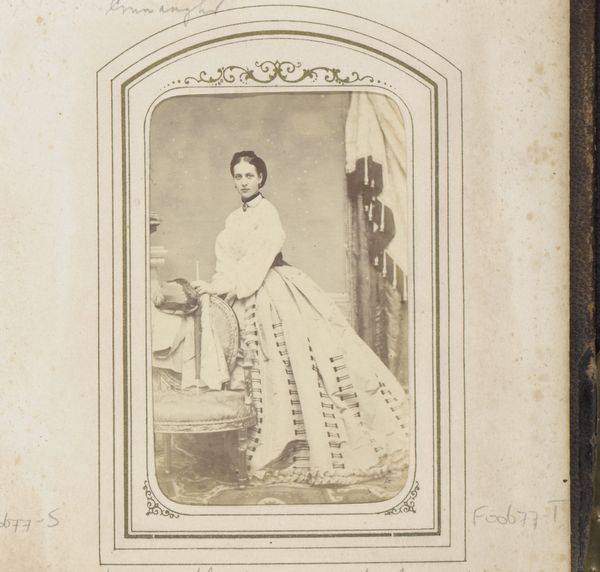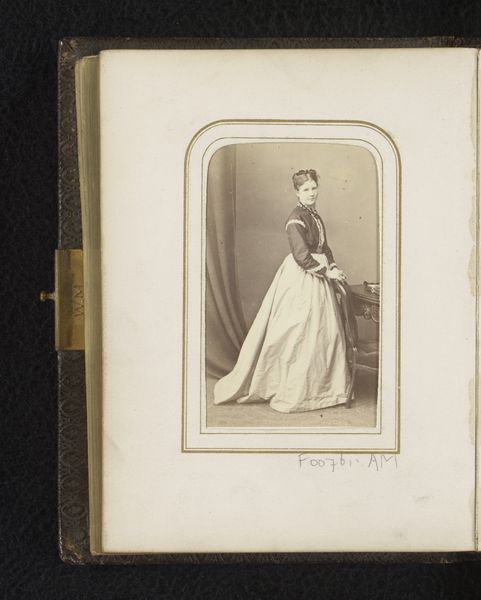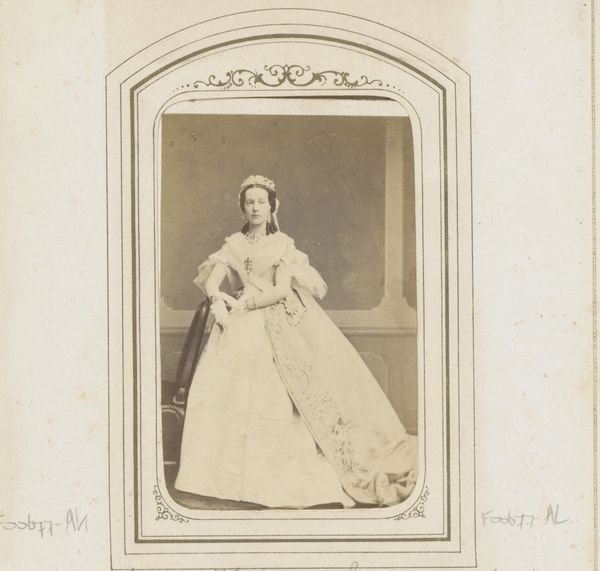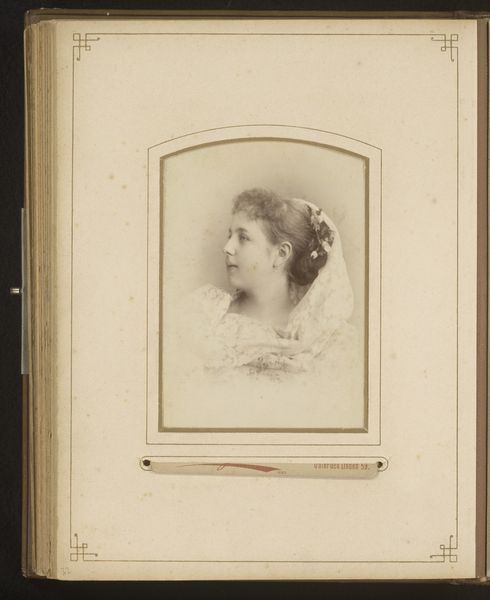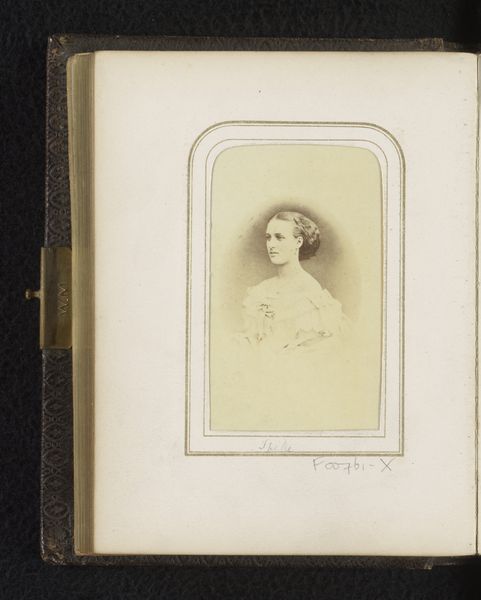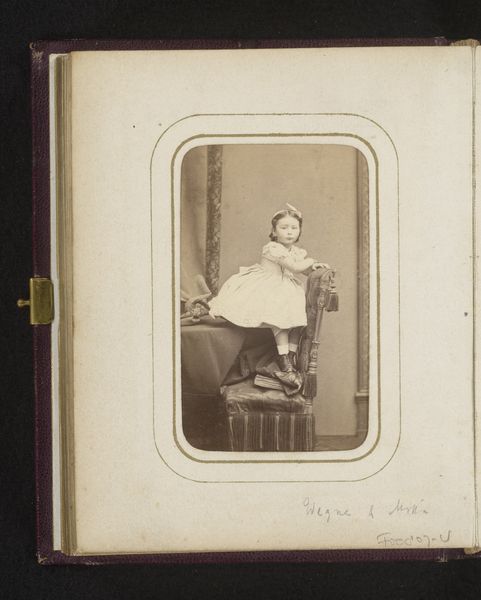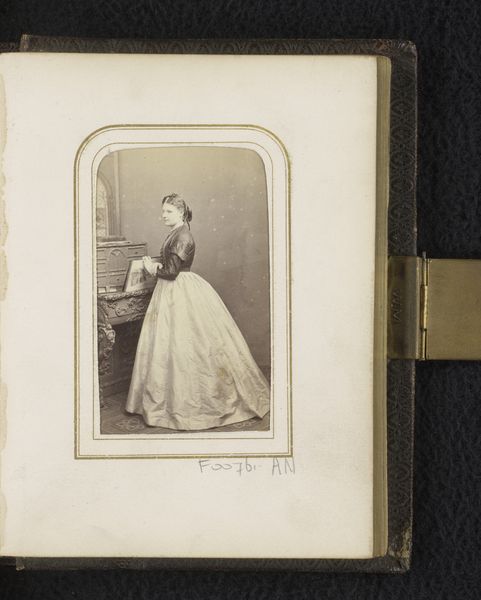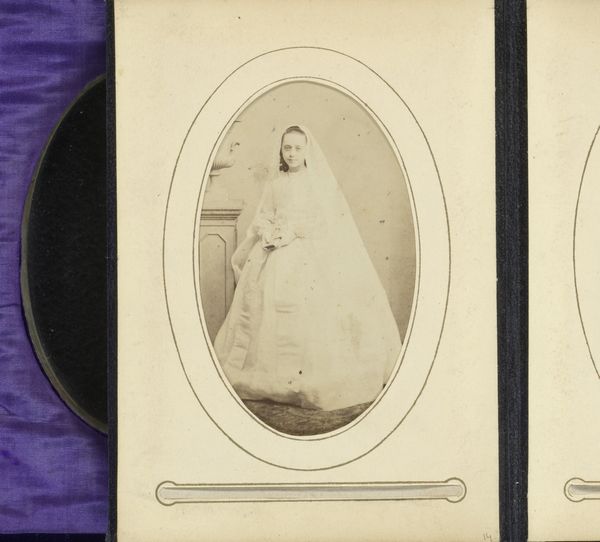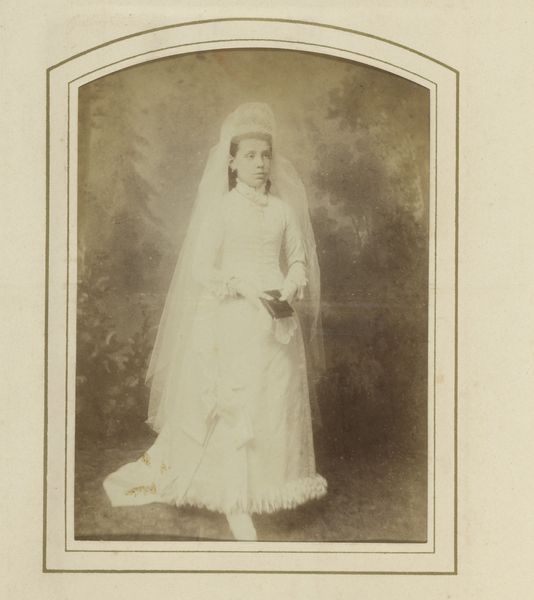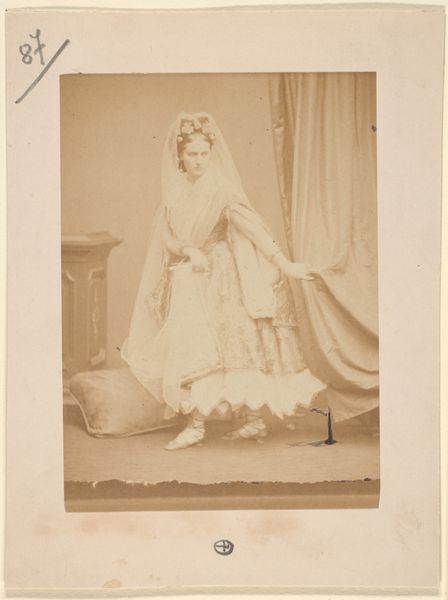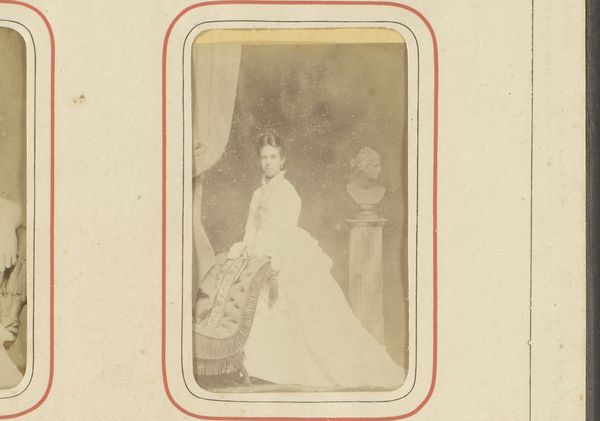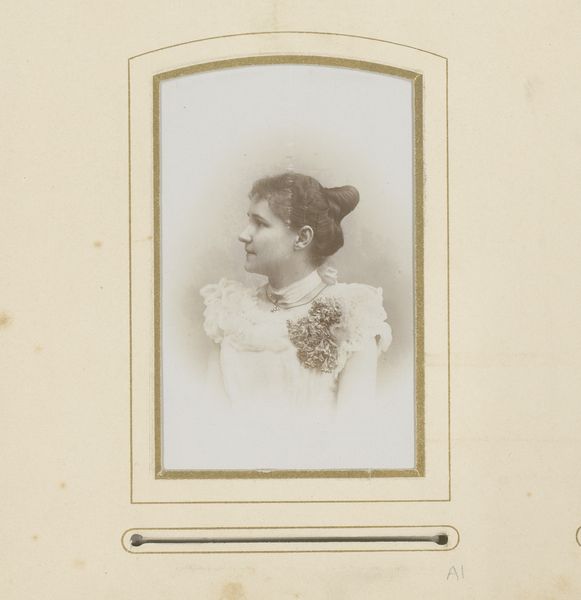
photography, albumen-print
#
portrait
#
self-portrait
#
pictorialism
#
arts-&-crafts-movement
#
sculpture
#
photography
#
coloured pencil
#
watercolour illustration
#
albumen-print
Dimensions: height 134 mm, width 96 mm
Copyright: Rijks Museum: Open Domain
Curator: This is a portrait of Isadora Duncan, dating from about 1900 to 1915, held here at the Rijksmuseum. It’s an albumen print, offering a glimpse into her captivating presence. Editor: My first thought is that the image quality itself, or perhaps its preservation, really softens the entire scene. It lends a very dreamlike, ethereal quality to the portrayal. Curator: Indeed. Duncan, a pioneer of modern dance, was incredibly influential in liberating the art form from rigid balletic constraints. The photograph captures her in a way that echoes the Arts and Crafts movement. Pictorialism focused on creating images that resonated with emotional depth and symbolism rather than strict realism. This movement certainly reflects a changing attitude toward women. Editor: Look at the way her dress is draped; the fabric's fall suggests lightness, freedom...yet the medium, the albumen print, hints at the chemical processes, the crafting and labor that freezes that moment. It’s about the capturing and selling a likeness, turning the subject into an object to be desired. How much input did Isadora have, truly, on the making and presentation of her image here? Curator: It's a valid question. Duncan consciously cultivated an image that defied conventional expectations, a figure of independent expression who reclaimed her body as a source of artistic authority. This photograph captures some of that spirit—her serene gaze and the flowing gown speak of an individual liberated from constraints, even within the framing. But the tension with the medium certainly reminds of a very limited kind of agency. Editor: It makes you wonder how much control female performers or female artists really had in managing the manufacture and manipulation of their likeness and of their presentation in commercialised photographic form at that period. Was the means of production entirely or predominantly in male hands? And that control is everything. Curator: Absolutely. And as you mentioned the softening effect that has occurred, we should not ignore that as this picture degrades it offers a perhaps unintended blurring of the objectification. The picture takes on another affect through that natural process of wear. Editor: This pushes us to consider her presentation in a materialist view; she’s not just an artistic symbol, but also a product – someone who worked in ways and means available at that historical juncture to try and get her own agency, even if fleetingly. Curator: It underscores the layers of meaning embedded in what at first glance seems to be a straightforward portrait: a cultural icon grappling with the social and artistic constraints of her time, while we grapple with understanding those layers now. Editor: Precisely. We're left questioning the narrative while acknowledging the powerful symbolism and social forces present, captured, then made somehow still very visible, by time.
Comments
No comments
Be the first to comment and join the conversation on the ultimate creative platform.

